Steve Smith and His 500 Million-Year-Old Fossils
Steve Smith posing with his fossil display at Sahuaro High School.
October 1, 2021
“If I’m not back in 10 minutes, my wife knows I found something,” Steve Smith laughs as he shares some candid stories from his private fossil-retrieving expeditions. As a graduate of the Sahuaro 72′ class, Mr. Smith recently cemented his Cougar legacy with his new ancient fossil display in the lower 100 building. “When I went to Sahuaro, this place smelled like fresh paint.”
Dating back hundreds upon hundreds of years ago, most of the prehistoric fossils were self-collected throughout the entire world, from Germany to Brazil to France. During a sit down interview, Mr. Smith explained in great detail the origin of his passion and his not-so-particular process for finding the rarest fossils.
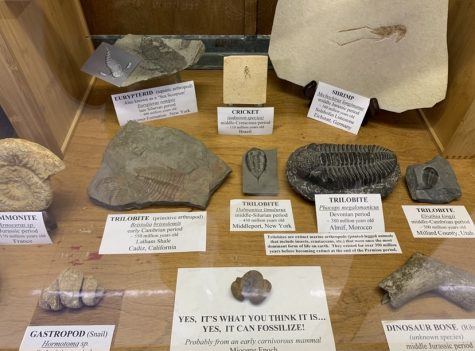
“How do you think all kids get into fossils? Starts with a D…..,” he asked me and of course I thought there was only one obvious answer. “Dinosaurs. Ever since I was 10, I’ve been interested in dinosaurs. I started reading about them and studying them in detail; I was fascinated. What did they do, what did they eat, how did they live?”
“From there I started reading about their environment, then about other animals, then about plants, then about insects, then about fossils. I started expanding my knowledge into everything, getting involved into dinosaurs’ entire world.” But his absolute favorite thing is not what you’d think it is. “I’m most intrigued by tracks; they tell a story. The behavior of the animal is what I find the most interesting.” As one big domino effect, the revolving interest in prehistoric studies kind of manifested itself. And now as a retired Air Force officer and middle school band teacher, searching for new fossils has become an even more prominent hobby, since Mr. Smith made a point of being able to do whatever he wants now.
Keeping a kit in both his cars, consisting of rock hammers, chisels, and brushes, the easiest way he finds fossils is stumbling into them on the side of the road. About a quarter of his fossils were found at a deliberate collecting site, while the other three quarters were found on mere opportunity. “When I’m driving and I see something slightly odd or interesting, I pull over. A lot of what I find are from secret back roads, road cuts, or cliffs.”
“I was in Indiana and on a road cut about three feet high and twenty feet long on the side of a little farm road, I found millions of Crinoids, which are fossilized sea lilies. They look like rolls of nickels, and there were literally so many of them that you could be picky. Like you could pick up two and think “Nah” or “Oh that’s a good one” and toss them aside and pick up the next two. That’s how many there were.”
Mr. Smith is constantly scanning for anything that catches his eye, whether he’s expected to find something or not. “If you go to the Grand Canyon or Colossal Cave or even one a hike, most people are looking up while I’m looking down.”
I asked him about the process of labeling fossils, and it’s pretty complicated. Only a real professional, like Mr. Smith himself, could do it with ease. “The oldest fossil I’ve found is over 500 million years, so we have to use this system called Atomic Dating. We use half-lives of elements. Every element, if it’s radioactive, it decays at a set rate, so some of them have half-lives of 100 thousand years or 50 million years. So when they find a bed and do different tests, they can predict when the rock formed, and date it however many years old it is.”

While the great finds are always great, they’re uncommon. It’s easy to lose sight of your purpose as you come across thousands of duds. But alas, patience is a virtue, and once you experience that one eureka moment as you finally come across something worth while, the motivation will strike again. “You never know what you’ll find. Most of the time you don’t find anything.” Mr. Smith’s collection is only about 1/3 self-collected, which just proves you’re not always going to be successful. However, the other 2/3 of his over 5,000 fossil collection has been bought from various gem and mineral shows and shops worldwide.
“While I was stationed in Germany, my German friend who had a small fossil museum, and I found a cliff face in the ancient volcano Donner’s Berg — which means thunder mountain. We started prying up slabs and looking underneath them and we found a giant foot, about the size of my hand. We removed about six feet of rock, checking that rock for even more fossils. It took us six months to find a five foot long reptile.”
When I walked by the display for the first time, I even had to do a double take. I was really engrossed by those reptile tracks, which just seems so real, and I know so many other students are too. “I displayed my best fossils here at Sahuaro because hopefully it’ll stimulate interest in some kids. What’s the point of having them if no one can see them?”
As a final sign-off, Mr. Smith ultimately wants to inspire everyone reading this article to engage in life, for you are not doing yourself any favors if you don’t. “Chase your passions. Chase your interests. Don’t just sit and vegetate, get out and see the world.”

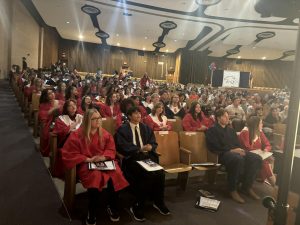


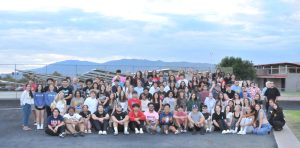





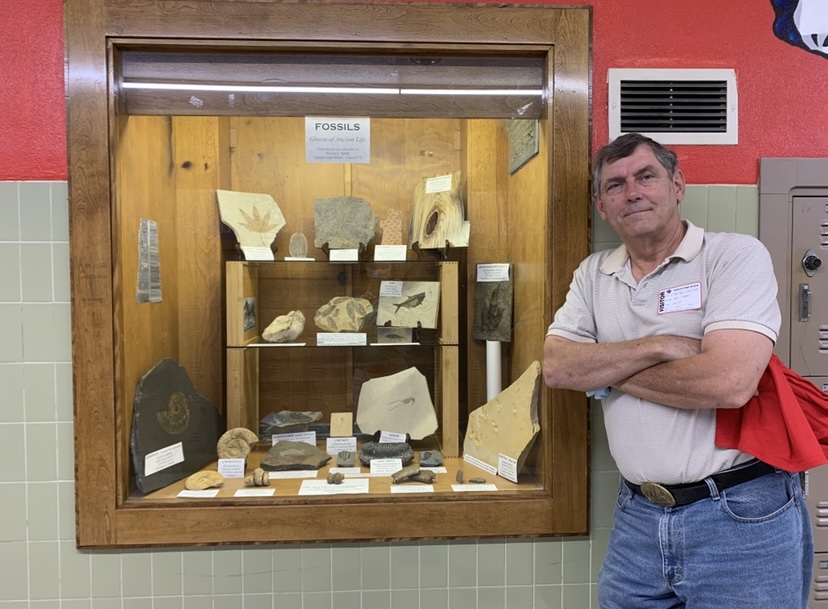

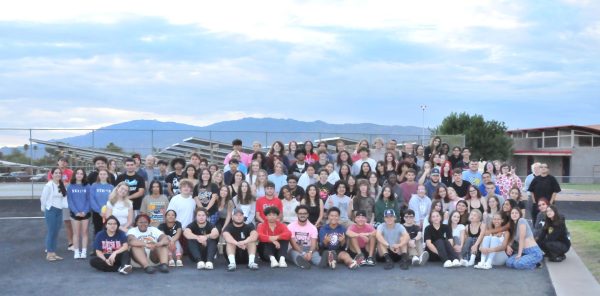


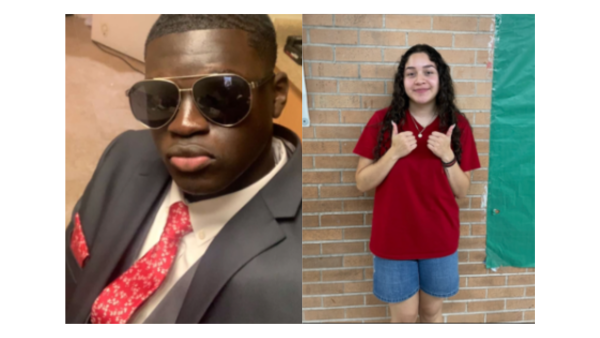
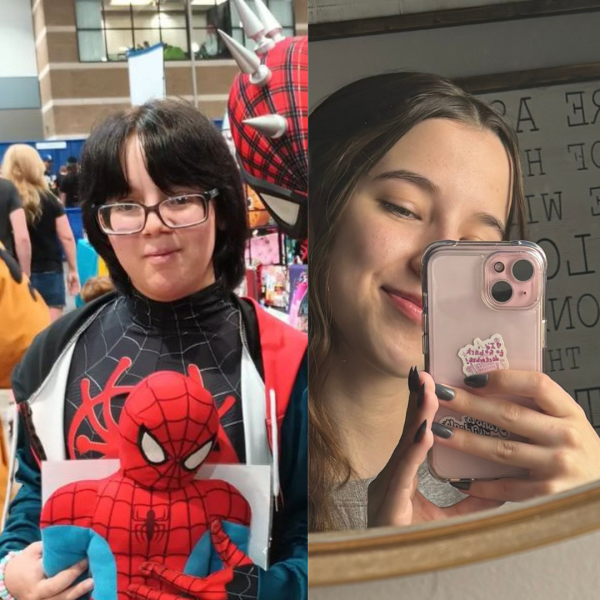



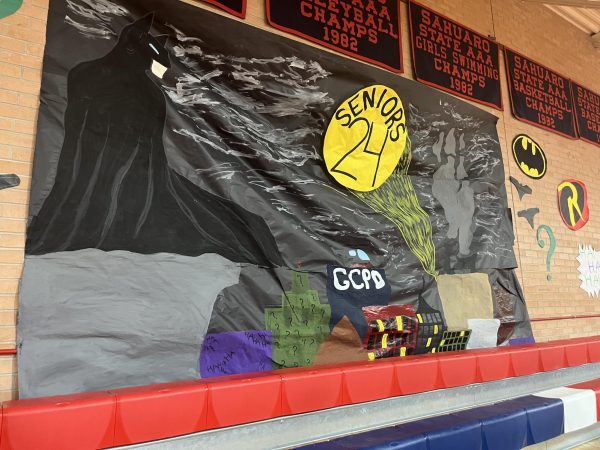
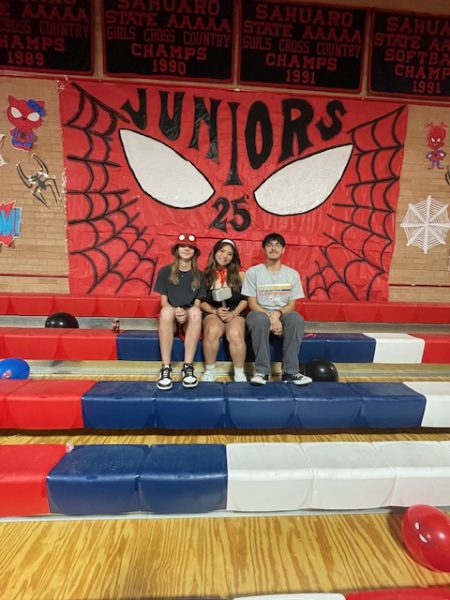
Dave Jacobs, SHS '71 • Oct 1, 2021 at 6:07 pm
First, thanks Steve for this great display and donation. Having known Steve since many of those fossils were still living creatures… the true reason behind his expertise with fossils is:
it takes one to know one!